Choosing the right type of receptacle and packaging aids has a direct influence on the security of a load, the prevention of damage and the costs of storing, handling and transportation. The main tasks of transport packaging are:
- to protect the cargo from loss, damage or depreciation,
- to protect people, the environment and the transportation vehicle from potential damage caused by the cargo, and also
- to enable high levels of mechanization and rationalization of storage, handling and transportation processes.
Modifications are relatively easy to implement for cartons, crates and cases. However, fiber, plastic and steel sheet packaging can only be modified gradually since many filling plants and packaging lines are designed specifically for use with special receptacles. Thus, solutions must be found that take account of the needs of all concerned. This can only be achieved in conjunction with manufacturers, industrial associations and standardization committees. This process also requires considerable investment.
The design of fiber drums, barrels, canisters, pails, corrugated barrels, quick lever-closure drums etc. must be revisited and modified in the long-term, both with regard to the fundamental design and the dimensions of the receptacles.
The risk of damage during transport is disproportionately large for some of the packaging receptacles commonly in use. Furthermore, transport using some of the existing packaging receptacles requires considerable outlay in terms of materials and personnel if the goods packed in these containers are to reach their destination without damage.
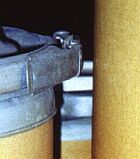 |
 |
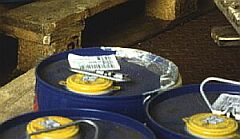 |
Risk of damage when using commonly available packaging receptacles |
The closures on fiber drums, the handles on buckets, pails, canisters, and other similar containers can cause to damage to cargo stored on top of or next to them as a result of high point loading. Professional loading requires the use of additional dunnage, and increases the amount of stowage space lost during packing as well as increasing personnel costs.
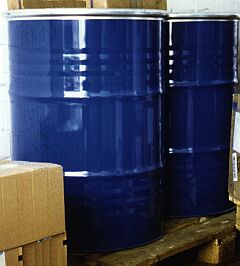 |
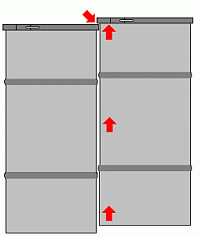 |
 |
|
| Disadvantages of commonly available drums/quick lever-closure drums |
||
As a result of loads caused during transportation, drums of this type ride up over the corrugations of neighboring drums. This encourages the formation of transport gaps and the damage associated with these. If the levers of quick lever-closure drums extend beyond the edge of the drum, these may snag. The consequences of this include unintentional opening of the drums and/or damage to the drums.
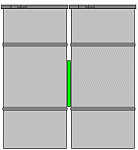 |
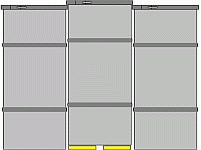 |
|
| Additional measures to avoid design-related gaps | ||
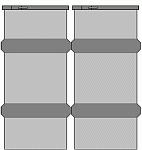 |
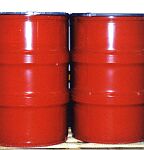 |
|
| Avoiding the formation of gaps by using a different drum design | ||
Transport damage caused by gaps formed as a result of the design of the receptacles can only be prevented by employing further materials which leads to additional costs for materials and personnel, or by selecting a different type of drum with wider corrugations and recessed closures. It is obvious that, in the long-term, the selection of a better drum is the more cost-effective solution.
Careless packing is one of the main causes of accidents and damage. Fundamental errors are often made as early as design and production of the goods. This is because storage, handling and transport are rarely taken into consideration at this stage. The same applies to the production and use of various packaging receptacles and packaging aids: These simply do not meet the requirements.
In the majority of cases, however, it is the "packer" who makes the mistakes responsible for damage suffered during transportation. A package is only appropriate for carriage when it is able to withstand all the manipulation to be expected during storage, cargo handling and transportation, also in terms of keeping the environment protected from the goods. Not all packaging faults will cause damage, but the risk to the contents is increased considerably.
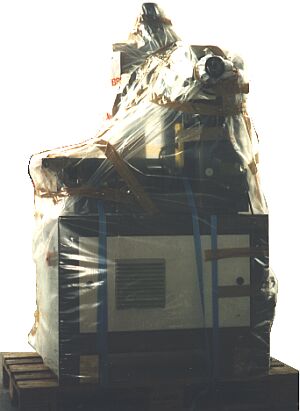 |
||
| Machine component intended for packing into a container |
||
Because the machine component itself has not been designed to be transported by forklift truck, it has been placed on a pallet (and not secured) for transportation within the company. Simply maneuvering the component into a container is already fraught with a number of difficulties. In order to be able to secure it correctly, considerable outlay in terms of materials and staff hours will be required. If the packaging is designed to act as protection against climatic conditions or corrosion, then the damage to the plastic film that is likely to be caused by necessary securing measures is likely to have negative consequences for the cargo.
What is required is a skid which can be transported using forklift, similar to the floor of a case, and to which the machine component can be bolted. Securing would then be easy. The skid plus machine component could be secured in place in the container using vertical bracing.
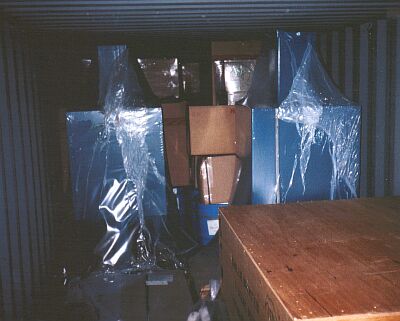 |
||
| Lack of securing in the container as a result of the method of packing | ||
The packing staff often give up when attempting to properly secure objects that are not suitably packaged. The load is simply placed in the container and left to its own devices.
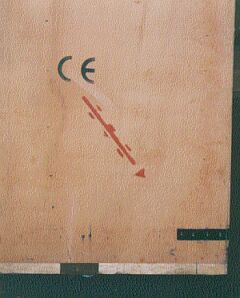 |
Packaging which is unsuitable for handling |
This case does not have any lower skids. In order to be able to comply with the sling here hoisting instructions given by the symbol on the case, or for transportation using a forklift, the forklift operator must force the forks under the case to lift it.
| Packaging that is not suitable for storage |
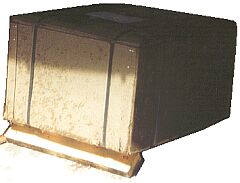 |
The lower skids of this package are completely missing at the rear, and are breaking away at the front. Thus the package is no longer suitable for transportation.
In practice, people fail to assign as much importance to the issue of the suitability of packaging for transportation as they should. The issue affects all types of transportation and is thus not specific to maritime transport alone. It is, however, of particular importance when loading containers for maritime transportation.
The following basic principles may be used to assess the suitability of a load for transportation:
- Loads must be in a state which does not, in any way, affect safety during transport.
- A load is secured appropriately for carriage if, when loaded and handled in the proper manner, it is unable to cause damage to persons, to handling or transportation equipment or to other cargo.
It must also be assumed that specialists are aware of the different demands made of small, large, display and sales packaging and are able to differentiate between these demands and the demands made of combination and transportation packaging and load units.
Transportation packaging must be constructed in such a way that it is suitable for carriage in order to ensure that it meets all the demands of handling, storage and transportation. This applies to all aspects: protection of the goods, protection of the environment from the goods, or issues relating to handling, packing, stowage, securing etc.
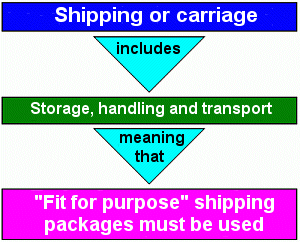 |
Unfortunately in some areas, concepts such as ordinary commercial packaging, overseas packaging and seaworthy packaging are still often used. Concepts such as packaging suitable for transport or fit-for-purpose packaging are preferable, since such concepts are used in transport insurance law.
The manufacturers and shippers of goods must, at the very least, inform themselves of the following issues and construct/select suitable packaging formats accordingly.
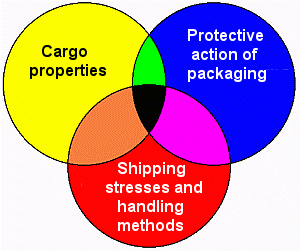 |
All measures for protecting the goods from damage must focus on the loads experienced during storage, handling and transportation. Goods should always be packed safely if they require protection from complete, or partial loss or from damage, or if the goods themselves represent a risk to the environment. If these basic principles are generally adhered to and the relevant ISO , EN or DIN standards and other technical regulations are also observed, the best conditions for damage-free transportation can be achieved.
In the area of hazardous goods, legislation has generally taken account of the above factors in the form of special packaging regulations. But what is the use of introducing packaging regulations for hazardous goods when they can (and must) be packed into a container with other goods which are less suitably packaged.
Not all packaging faults will cause damage. However, the risk is increased considerably. Poor packaging has an additional psychological effect: Bad packaging promotes carelessness and incorrect handling among handling staff.
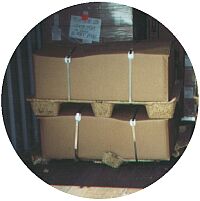 |
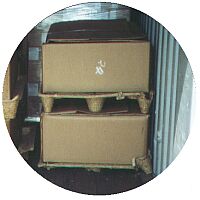 |
|
| An example of bad packaging | ||
It will be difficult to stow other items on top of this crate since part of the contents extend above the top of the wooden crate.
 |
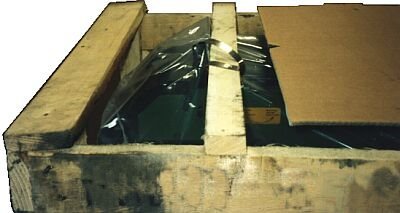 |
||
| Incorrectly constructed wooden crate | ||
Packing a CTU with packages of this type causes additional expense since so much interlayer dunnage must be employed in order to stack other objects on top of the crate while ensuring that the contents of the wooden crate do not suffer damage.